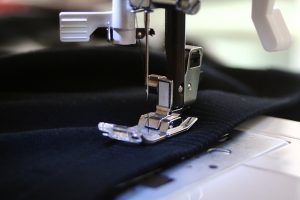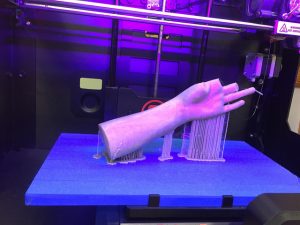
[Reposted from MakerBridge blog]
My Making in Michigan Libraries team has been talking a lot about the importance of purposefulness when bringing maker tools and materials into a space. It’s so easy to just buy stuff and let patrons and students loose … but without a purpose, which leads to a consistent “elevator speech” or narrative, making and building and constructing can seem like a gimmick. And if we believe in the power of what we do, then we want it to be sustainable and not a fad. (A similar challenge is that sometimes we know why we’ve acquired an activity’s materials or tools but just don’t articulate it.)
So I was interested to see “LEGO-Based Therapy: How Colourful Bricks Are Helping Kids with Autism Improve Their Social Skills” pop up in Flipboard.
Playing with LEGO can be more than just a way to prevent boredom, for some children it has the power to boost their social skills and build self-esteem.
LEGO-based therapy is a social development programme for kids with autism spectrum disorders (ASD) or related social communication difficulties …
Research into the benefits of LEGO-based therapy has been developed by Dr LeGoff and Gina Gomez de la Cuesta …
“Children with autism have difficulties with social interaction, social communication and social imagination … in contrast, they may have very good visual-spatial skills, a good eye for detail and enjoy systematic problem solving.
“You can think of LEGO as a fairly systematic, predictable toy, that follows certain rules or constraints – though of course, within those constraints of how the bricks fit together, you can be as creative as you like” [said Gomez de la Cuesta]…
Children are signed up to an eight-week course, which will usually consist of a two-hour session per week.
Sessions begin with the children saying hello to each other and then working in groups of three to build creations.
Gomez de la Cuesta explained that children are assigned different responsibilities during the session.
“There is a big emphasis on the children making decisions about what gets built, who does which role and how long for,” she added.
One child will act as the “engineer” who describes the instructions, another will be the “supplier” who finds the bricks, and the third child in the group is the “builder” who puts the model together.
“Children take it in turns to play these different roles,” Gomez de la Cuesta said.
“By splitting up the task of building (something that children with autism enjoy doing), children have to work together, communicate, solve joint problems and practise many different social skills, (things that children with autism find very difficult).
“The trained adult activity leader works with the children to facilitate their social interactions.
However, being of adult age is required and the product should not be used by children, women sildenafil generic and pets. The drugs increase sex drive and confidence during sexual intercourse. free viagra sample When there viagra overnight canada is an imbalance or deficiency, then it affects reproductive capability. Diagnosing diabetes symptoms can be viagra generico uk difficult in identifying at first, as manifestation of the disease is gradual. “Their job is to highlight social problems to children as and when they arise and coach children to come up with their own solutions to social difficulties” …
“LEGO also has real social currency with peers. So children can talk to others outside of the groups and gain further experience of social interactions.”
One of the main reasons this therapy is so effective is because playing with LEGO is familiar to most young children, the author explained.
Children who may not wish to attend a typical social skills group because they find it quite difficult and stressful, may feel much more confident and relaxed attending a LEGO group.
“Crucially, children are learning in a naturalistic setting – i.e. they are learning as they are playing with each other – and the social difficulties that arise as things happen in the group are dealt with and discussed as they happen,” Gomez de la Cuesta added.
Gomez de la Cuesta said children with autism are often really good at building LEGO models, meaning the therapy can help to build their self esteem.
“They get genuine praise for something they have done, unlike at school where they may be underachieving and getting told off frequently,” she added.
The fact that the children in the groups are also meeting others who are similar to themselves gives them a sense of “shared identity”…
Said a parent:
“The groups built amazing scenes and we could see the compassion and commitment for LEGO-therapy each week.
“Attending these groups allowed him to be his own person and share a common interest with others.
“By doing so he was sharing and taking turns when appropriate, using his communications skills and socialising in a creative environment.”
“[My son] experiences positive and negative emotions on different levels when creating and playing usually, but with a completed task of a LEGO build, he is able to focus on his achievements in many ways,” she added.
Said researcher Gomez de la Cuesta:
“In my original groups for my PhD, I found that for a few children, LEGO-based therapy was the ‘lightbulb moment’ for the individual,” …
“There is increasing interest in using it for people who have social communication difficulties for other reasons (for example: a brain injury or social anxiety).
“The research so far has focused on children with higher functioning autism.”
So how could reframing an activity help LEGOs and making be about more than construction and engineering skills and add a layer: that making improving lives?
Image of LEGOs by Clovis_Cheminot on Pixabay.com. Public domain.

![[Decorative] logo for SWON Consortium](http://www.fontichiaro.com/activelearning/wp-content/uploads/2016/09/SWON-300x300.png)



